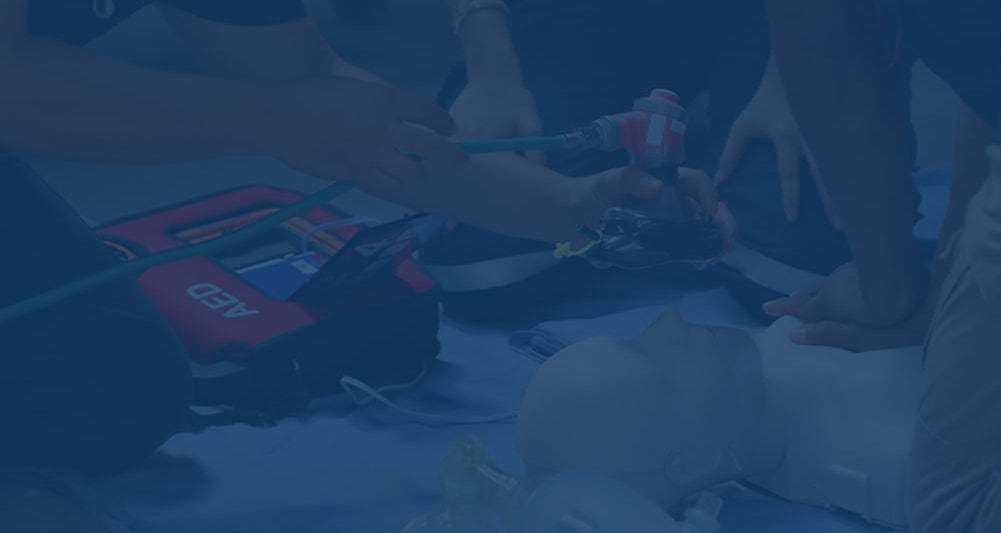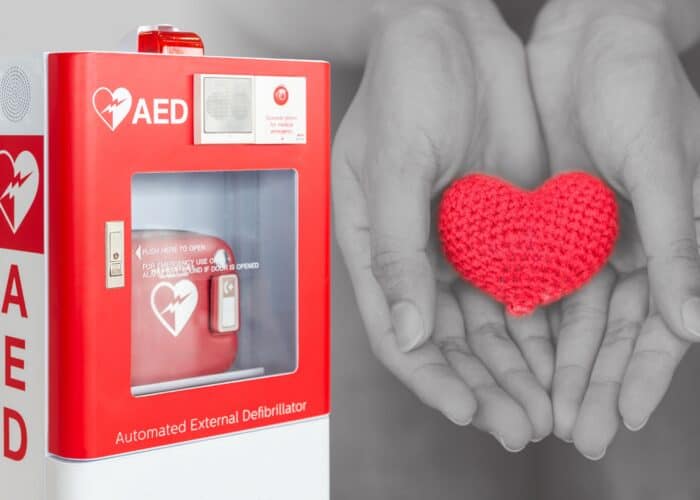During cardiac emergencies, every second counts. Thanks to technological advancements, Automated External Defibrillators (AEDs) have emerged as invaluable tools to help save lives during cardiac arrest.
What are AEDS and how do they work?
Automated External Defibrillators are portable electronic devices designed to analyze the heart’s rhythm and deliver an electric shock, known as defibrillation, to restore a normal heartbeat. AEDs are equipped with adhesive pads which are placed on the chest of the person experiencing cardiac arrest.
When placing the defibrillation pads on the person’s chest, follow the images printed on them. The pads are placed on the upper right portion of the chest and the lower left side of the ribcage to best follow the electrical pathway of electricity through the heart. These electrode pads detect the heart’s electrical activity and analyze the rhythm of the heart once attached to the person.
The AED can rapidly assess the situation and decide if an electric shock is needed to reset the heart’s rhythm. If the AED determines that defibrillation is required, it delivers a controlled electric shock to the heart through the electrode pads. Adult shocks are between 120-360 joules, while pediatric shocks are between 50 and 120 joules. To put in perspective, a taser’s output can be up to 1.75 joules.
The shock is intended to interrupt the irregular rhythm and allow the heart to reset itself, hopefully restoring a normal heartbeat. After defibrillation, AEDs are set to reanalyze the person’s heart rhythm every two minutes and provide guidance on whether additional shocks are necessary, as well as instructing when to perform CPR.
Some AEDs have pediatric pads and others have a conversion button, also known as a pediatric button, to lower the output of electricity when used on pediatric patients. When pediatric pads or the pediatric button is not available, it is advised to use adult electrode pads. Electrode pad placement for children is different than for adults; pads need to be placed on the center of the chest and between the shoulder blades on the child’s back due to the need for more space. AEDs can also be used on pregnant patients as well as infants.
What are irregular heart rhythms?
The AED is programmed to identify two main types of irregular heart rhythms: ventricular fibrillation (VF) and pulseless ventricular tachycardia (pVT). Both of these rhythms are potentially life-threatening and require immediate intervention.
Ventricular fibrillation (VF) is a chaotic, rapid, and irregular heart rhythm. Instead of a coordinated contraction of the heart muscle, the ventricles of the heart quiver or fibrillate, resulting in an ineffective pumping of blood.
Pulseless ventricular tachycardia (pVT) is a fast, regular rhythm that originates in the ventricles of the heart. The heart beats at a rapid rate, compromising its ability to effectively pump blood throughout the body.
In both VF and pVT, prompt intervention is crucial. AEDs have been instrumental in providing immediate defibrillation, especially in public spaces and healthcare settings, increasing the chances of survival for individuals experiencing these life-threatening events.
How to use an AED
To use an AED, simply turn the machine on. Then place the electrode pads on the patient according to the image on the pads, and then follow the prompts from the AED. The AED will tell you when to administer a shock if one is needed, as well as when to restart CPR. Anyone in California can purchase their own AED, California legislation does not require a prescription for AEDs.
By automating the analysis of heart rhythms and delivering precise electric shocks, AEDs bridge the gap between the onset of a life-threatening event and the arrival of professional medical assistance. These devices are not merely tools; they represent a transformative force and significantly improve the odds of survival for those experiencing cardiac emergencies.



Very nice post. I just stumbled upon your blog
and wanted to say that I have really enjoyed browsing your blog posts.
After all I will be subscribing to your feed and I hope you write again very soon!
Thank you! We are glad to hear you are enjoying our blog posts.